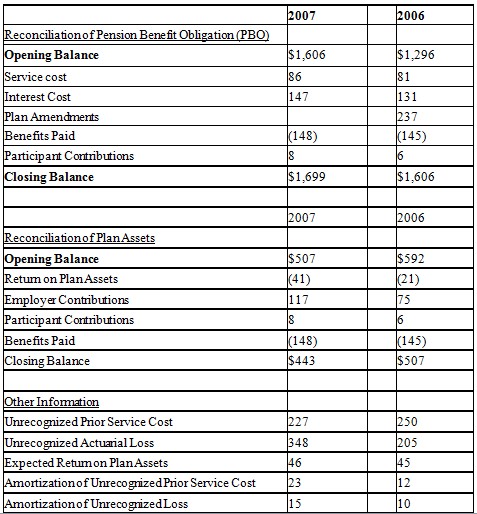


===========================================
Scenario analysis is a powerful tool used across various industries to evaluate potential outcomes based on different assumptions. In financial markets, particularly trading, it allows investors and traders to prepare for a range of possible scenarios by understanding how different variables could affect their portfolios or positions. This article explores the practical applications of scenario analysis, focusing on its significance in risk management, trading strategies, and investment planning. We’ll also dive into specific methods used in scenario analysis, compare their advantages and drawbacks, and provide actionable insights on how to incorporate these techniques effectively into your trading or investing practice.
What is Scenario Analysis?
Scenario analysis is a process that involves considering and evaluating different possible future outcomes or scenarios based on a range of variables. Unlike traditional forecasting methods that focus on predicting a single future outcome, scenario analysis involves exploring multiple potential futures, including both best-case and worst-case scenarios.
In finance and investing, scenario analysis typically involves assessing how market variables—such as interest rates, commodity prices, or geopolitical events—could impact investment portfolios or individual assets. By analyzing different possible scenarios, traders and investors can better prepare for uncertainty and make more informed decisions.
Key Characteristics of Scenario Analysis:
- Exploration of Multiple Outcomes: Focuses on assessing various potential futures, from optimistic to pessimistic.
- Use of Assumptions: Relies on changing key assumptions to examine how they impact the overall outcomes.
- Risk Management Tool: Primarily used to assess risk by simulating different conditions and evaluating the impact on performance.
- Decision Support: Helps decision-makers by providing a structured way to evaluate different strategic options under uncertainty.
Practical Applications of Scenario Analysis in Trading
Scenario analysis is widely used in financial markets for its ability to provide insights into risk exposure, assist with hedging, and optimize trading strategies. Below are some of the key practical applications of scenario analysis in trading.
1. Risk Management in Trading
Scenario analysis plays a crucial role in identifying and mitigating risks in trading. By simulating different market conditions, traders can better understand the potential impact of adverse events on their positions.
How Scenario Analysis Supports Risk Management:
- Stress Testing: Traders can test how their portfolio would perform under extreme market conditions, such as sudden market crashes or economic recessions.
- Hedging Strategies: Traders can use scenario analysis to develop effective hedging strategies by identifying potential risks and creating positions that offset those risks.
- Portfolio Diversification: Scenario analysis helps traders understand the potential benefits of diversifying their portfolios by evaluating how different asset classes react to various market conditions.
For instance, when using scenario analysis in perpetual futures trading, you can examine how different market movements (e.g., a 10% drop in Bitcoin’s price) would affect your leveraged position. This helps traders ensure that they have appropriate risk mitigations in place.
2. Trading Strategy Optimization
Another key application of scenario analysis is optimizing trading strategies. Traders can simulate how their strategies would perform under different conditions, such as varying market volatility, interest rates, or price movements.
How Scenario Analysis Enhances Trading Strategies:
- Adaptive Strategies: Traders can assess which strategies work best in different market conditions and adjust their tactics accordingly. For example, a trend-following strategy may perform well in a bull market but underperform in a sideways market.
- Backtesting Scenarios: Scenario analysis can be used in backtesting to simulate historical market conditions and assess how strategies would have performed in the past, providing valuable insights for future trading decisions.
- Scenario-Based Performance Metrics: Traders can evaluate the performance of their strategies using metrics derived from different market scenarios, such as profit/loss ratios or drawdowns, which are critical for optimizing risk/reward ratios.
3. Position Sizing and Leverage Decisions
Scenario analysis also helps traders determine the optimal position size and leverage based on various risk scenarios. By simulating different market outcomes, traders can assess how much capital they should allocate to each trade and how much leverage they can safely use.
Position Sizing Through Scenario Analysis:
- Risk-Reward Optimization: By evaluating potential scenarios, traders can balance risk and reward more effectively, deciding on the optimal position size.
- Leverage Management: Scenario analysis assists in understanding how leverage could amplify both gains and losses. Traders can test different levels of leverage to identify the safest amount they can use without taking on excessive risk.
- Capital Allocation: Understanding how different positions would perform under various scenarios allows traders to allocate capital more effectively and minimize exposure to risks.
Practical Applications of Scenario Analysis in Investment
Scenario analysis isn’t just a tool for traders; it is also widely used in investment analysis to guide long-term decision-making. Below are some practical ways in which scenario analysis is applied to investment strategies.
1. Portfolio Management and Asset Allocation
In portfolio management, scenario analysis is used to assess how different economic conditions could affect a portfolio’s performance. By analyzing potential scenarios, portfolio managers can make informed decisions about asset allocation and ensure that the portfolio is well-diversified to withstand different market conditions.
How Scenario Analysis Improves Portfolio Management:
- Diversification Decisions: Scenario analysis helps identify the best asset mix by evaluating how different asset classes react to varying market conditions. This enables managers to build a portfolio that balances risk and return.
- Stress Testing Portfolios: By testing portfolios under extreme scenarios (e.g., economic crises, geopolitical instability), portfolio managers can identify vulnerabilities and adjust their holdings to mitigate potential losses.
- Long-Term Strategic Planning: Scenario analysis is also used for long-term investment planning, where managers can project how portfolios might perform under different macroeconomic conditions, such as inflation or deflation.
2. Investment in Alternative Assets
With the increasing popularity of alternative assets such as cryptocurrencies, real estate, and commodities, scenario analysis is a valuable tool for assessing how these assets might behave under different market conditions. By incorporating alternative assets into a portfolio, investors can diversify and reduce risks.
Scenario Analysis for Alternative Assets:
- Cryptocurrency Investments: Given the volatile nature of cryptocurrencies, scenario analysis can help investors evaluate how digital assets like Bitcoin or Ethereum will perform in different economic scenarios, such as market crashes or regulatory changes.
- Real Estate: Real estate investors can use scenario analysis to evaluate the impact of interest rate changes, inflation, and economic downturns on property values and rental yields.
- Commodities: For commodity investors, scenario analysis can simulate how supply and demand shocks, geopolitical tensions, or environmental factors affect the prices of goods like oil, gold, or agricultural products.
Scenario Analysis Strategies for Different Types of Traders
Different types of traders and investors can use scenario analysis in various ways, depending on their risk tolerance, trading style, and objectives.
1. Scenario Analysis for Beginner Traders
For beginner traders, scenario analysis can be used to understand how different market factors affect the outcomes of trades. Beginners can apply basic scenario analysis to assess the impact of price fluctuations, leverage, and stop-loss strategies on their trades.
2. Scenario Analysis for Advanced Traders
Advanced traders can use more sophisticated scenario analysis techniques, such as Monte Carlo simulations or option pricing models, to evaluate complex trading strategies, including derivatives, hedging, and high-frequency trading.
3. Scenario Analysis for Risk-Averse Traders
Risk-averse traders can use scenario analysis to test conservative strategies that minimize risk, such as low-leverage positions or diversification across non-correlated assets. By running stress tests, they can ensure their portfolio is resilient under adverse conditions.
Frequently Asked Questions (FAQs)
1. What is the primary benefit of using scenario analysis in trading?
The primary benefit of using scenario analysis in trading is its ability to help traders anticipate and prepare for various market conditions, thereby optimizing their trading strategies, managing risk, and making more informed decisions.
2. How can scenario analysis improve my trading strategies?
Scenario analysis improves trading strategies by providing insights into how different market conditions might impact your trades. By testing your strategies against various scenarios, you can identify the most effective approaches for different market environments, which helps optimize risk and return.
3. What tools can I use for scenario analysis in trading?
Several tools can be used for scenario analysis in trading, including financial modeling software, risk management platforms, and advanced statistical methods like Monte Carlo simulations. Many platforms also offer built-in scenario analysis tools that allow you to model different market conditions and assess their impact on your portfolio or trades.
Conclusion
Scenario analysis is an essential tool for both traders and investors. It allows you to evaluate potential outcomes under different conditions, manage risk, and optimize strategies. Whether you are assessing trading risks, optimizing portfolio allocations, or evaluating alternative assets, scenario analysis offers valuable insights that can lead to more informed decision-making. By using the methods outlined in this article, you can better prepare for market uncertainty and enhance your trading or investing strategy for long-term success.